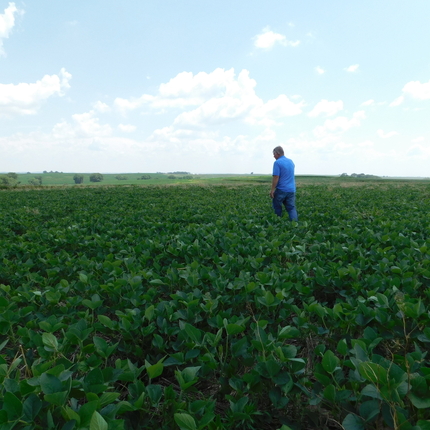By Roz Brown, Public News Service (Iowa)
Demonstrating best practices for improving soil health and water quality has been front and center for many Iowa farmers this summer.
Loran Steinlage has hosted several field days on his 750 acre northeast Iowa farm, explaining successful, regenerative practices he's tried – such as cover crops, interseeding and relay cropping.
He says as Mother Nature unfolds her hand each year, he adjusts his rotation schedule for growing corn, soybeans, cereal rye and winter wheat.
"Part of the beauty of it is, doing nothing actually is probably the better thing to do,” says Steinlage. “I mean we're certainly no-till anymore, and we're not spending the money."
Steinlage says he not only has reduced the cost of fertilizer, but tests have found some soil samples from his fields are now healthier than "native" soils.
A 2017 Center for Rural Affairs survey of Iowa farmers found that in order to lower financial risks, 86 percent considered soil health when deciding on new farming practices. Cody Smith with the Center says a 1 percent increase in organic matter in the top six inches on an acre of land can allow the soil to hold an additional 27,000 gallons of water.
"This year, in June, we had a lot of rain,” says Smith. “And then in July, we had almost no rain in parts of the state. So, when you have better soil health, you can retain that moisture and be able to use it more effectively for your crops throughout the year."
Mitchell Hora is a seventh-generation farmer in southeast Iowa and the founder of a soil-health consulting company. He says it's long been thought that it takes 10 years to improve soil – but his work shows the turnaround can be much faster.
"We've been treating our soil as a dead, static growing medium,” says Hora, “when really, the soil is a living, dynamic continuum. And we have the best soil in the world here in Iowa – and so now, we have the ability to quantify that life."
The Center for Rural Affairs has found that concerns about soil health can bring Iowa farmers into water-quality discussions. When that happens, Iowa's watershed planning and related projects have higher success rates for implementation.





